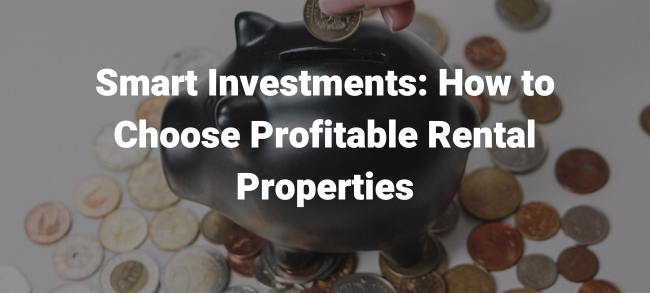How To Write A Good Property Listing

Before you start drafting your property listing, take some time to understand the demographics and preferences of your potential tenants.
Are they young professionals, families, students, or retirees? Knowing your audience will help you tailor your listing to highlight the features and amenities that matter most to them.
1. Know Your Audience
A well-crafted property listing is the key to attracting potential tenants and maximizing your rental income. As a landlord, your listing serves as the initial point of contact between your property and prospective renters. So, it's important to create a listing that not only showcases your property's features but also resonates with your audience.
Let’s explore the art of writing a good property listing that captivates potential tenants and sets your rental apart from the competition:
2. Highlight Key Features
Begin your listing by highlighting the key features of your property. Start with the basics such as the number of bedrooms and bathrooms, square footage, and any unique selling points like a spacious backyard, modern kitchen appliances, or a desirable location.
Use descriptive language to paint a vivid picture of what life would be like for a tenant living in your property.
3. Showcase High-Quality Photos and Visuals
They say a picture is worth a thousand words, and this couldn't be truer when it comes to property listings. Invest in professional photography or use high-quality images that accurately represent your property.

Add pictures of the outside of the building, the rooms, and any features you may have like a garden, gym, or pool. Your ad will look more enticing and entice potential tenants to set up a showing if the photographs are clear and well-lit.
Also, consider including a virtual tour or video walkthrough to provide potential tenants with a comprehensive view of the property. This not only enhances the listing but also saves time by pre-qualifying interested tenants who have already seen the property virtually.
4. Write a Captivating Headline and Introduction
The headline and introduction are your first opportunity to grab potential tenants' attention. Keep the headline concise but compelling, highlighting the most attractive feature of the property. For example, instead of "2-Bedroom Apartment for Rent," try "Charming 2-Bedroom Apartment with Spectacular Views."
In the introduction, provide a brief overview of the property's key selling points. Highlight unique features, such as recent renovations, proximity to amenities, or stunning views. Use descriptive language to paint a vivid picture and evoke interest in potential tenants.
5. Write a Detailed Property Description
The property description is where you provide detailed information about the features, layout, and amenities of the property. Be thorough but concise, focusing on what sets your property apart from others in the area. Consider the following elements:

- Layout and Features: Describe the layout of the property, including the number of bedrooms, bathrooms, and any additional rooms like a study or den. Highlight key features such as hardwood floors, stainless steel appliances, or a fireplace.
- Amenities: Outline any amenities available to tenants, such as parking spaces, laundry facilities, storage units, or outdoor spaces like a patio or balcony.
- Location: Emphasize the property's location and nearby attractions, including parks, public transportation, shopping centers, and restaurants. Highlight any desirable neighborhood characteristics, such as safety, walkability, or vibrant nightlife.
- Pet Policy and Restrictions: Clearly state your pet policy, including any restrictions on screening, breed, size, or number of pets allowed. This helps avoid misunderstandings and ensures compatibility with potential tenants.
- Utilities and Maintenance: Specify which utilities are included in the rent and any maintenance responsibilities for tenants. Transparency regarding these matters can help manage expectations and prevent disputes down the line.
6. Include Clear Rental Terms and Contact Information
Be open and honest about the rental conditions, including the length of the lease, the monthly rent, the security deposit, and any other costs or specifications. Indicate which way people like to be contacted—by phone, email, or online form—for questions or to schedule viewings.

Provide multiple contact options to accommodate different preferences and ensure timely responses to inquiries. Prompt communication fosters trust and demonstrates your professionalism as a landlord.
7. Tailor Your Listing for Online Platforms
In today's digital age, the majority of property searches begin online. To maximize your listing's visibility, leverage popular online platforms such as real estate websites, rental listing sites, and social media platforms. Optimize your listing for search engines by including relevant keywords and phrases that potential tenants are likely to use when searching for properties in your area.
Consider the formatting and layout of your listing to ensure readability across different devices, including smartphones and tablets. Use bullet points, headings, and paragraphs to organize information effectively and make it easy for potential tenants to skim through key details.
8. Perform Regular Updates and Maintenance
Once your listing is live, monitor its performance and make adjustments as needed. Pay attention to metrics such as views, inquiries, and conversion rates to gauge the effectiveness of your listing.
If you're not receiving the desired response, consider updating the photos, adjusting the rental price, or revising the description to better align with the preferences of your audience.
Keep your listing up-to-date with any changes to the property, such as renovations, upgrades, or new amenities. Regular maintenance and improvements not only enhance the property's appeal but also demonstrate your commitment to providing a quality living environment for tenants.
9. Work With a Professional Property Manager
Working with a professional property manager like those at Advantage Realty Services will help save you time and effort
marketing your property. Property managers handle everything, including writing property listings and screening potential tenants.
Reliable property managers also ensure that your property and your tenants are well taken care of. You won’t need to worry about managing the day-to-day operations of the rental business, as well as taking care of repairs and maintenance and other issues that may need your attention.
Conclusion
Crafting a good property listing is critical to your success. Remember to stay proactive, responsive, and adaptable to ensure your listing remains competitive in the ever-evolving real estate market.
With these strategies in mind, you'll be well-equipped to write effective property listings that showcase your rental properties in the best possible light. When in doubt, hire a reputable property manager like the
Advantage Realty Services. Contact us today to get started!
Advantage Realty Services Inc








